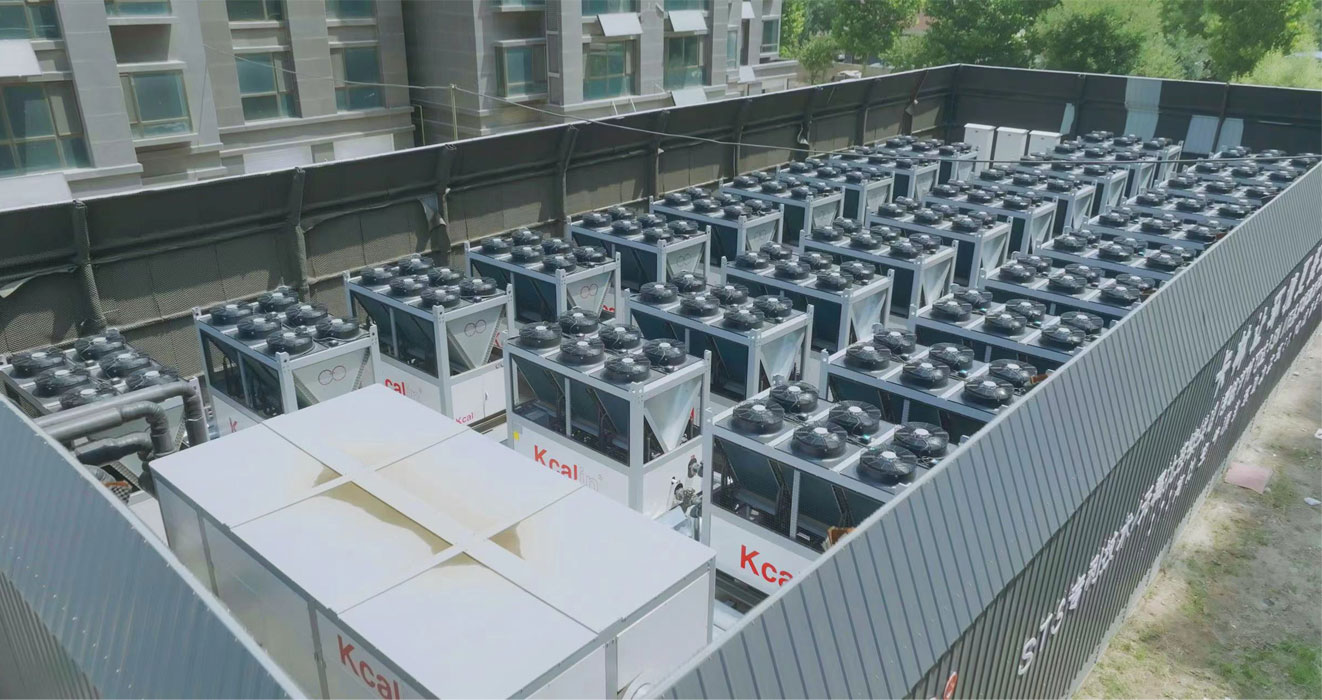As an environmentally friendly and efficient heating and cooling system, air source heat pumps are gradually receiving attention from people. However, many people still have some doubts about its core technology and the working principles of its four major components. This article will delve into the working principle of air source heat pumps, reveal their core technology, and take you to understand the mysteries of this popular technology.
Evaporator
The evaporator is an indoor component of an air source heat pump, playing a key role in absorbing indoor heat. When the air conditioning is in cooling mode, low-pressure refrigerant enters the evaporator, absorbing heat from the indoor air and evaporating. In this way, indoor heat is transferred to the refrigerant, achieving a cooling effect. When the air conditioning is in heating mode, the refrigerant in the evaporator absorbs heat from the outdoor environment and transfers it to the indoor air, thereby achieving heating effect.
Compressor, Energy Booster

The compressor is the core component of an air source heat pump, responsible for increasing the pressure and temperature of the refrigerant. When the air conditioning is in refrigeration mode, low-pressure refrigerant is sucked into the compressor, and through compression, the pressure and temperature of the refrigerant are increased. This will increase the temperature of the refrigerant and prepare for the subsequent condensation process. When the air conditioning is in heating mode, the compressor sucks in the low-temperature refrigerant and further increases its temperature through compression to meet heating needs.
Condenser
The condenser is the outdoor component of an air source heat pump, responsible for releasing heat to the outdoor environment. In refrigeration mode, high-temperature and high-pressure refrigerant passes through the condenser and comes into contact with outdoor air to release heat. In this way, the temperature of the refrigerant decreases and becomes liquid. In heating mode, the refrigerant will compress and heat the heat absorbed from the evaporator, releasing it again into the outdoor environment.
Expansion valve, flow regulator
The expansion valve is a flow control component in an air source heat pump, connecting the evaporator and condenser, and playing a key role in controlling the refrigerant flow rate and pressure. When the refrigerant enters the expansion valve from the condenser, the adjustment of the valve causes the refrigerant pressure to decrease, thereby cooling the refrigerant and causing it to enter a low-temperature and low-pressure state before entering the evaporator. This process cycle continues, achieving the normal operation of the air energy heat pump.
By analyzing the working principles of the four major components of an air source heat pump, we can see that the evaporator, compressor, condenser, and expansion valve work together to complete the cooling and heating processes in the air source heat pump system. This efficient and environmentally friendly heating and cooling technology achieves energy conservation and environmental protection by effectively utilizing indoor and outdoor heat. With the increasing demand for energy conservation, emission reduction, and sustainable development, air source heat pumps will inevitably become the mainstream choice in the future.







Comment